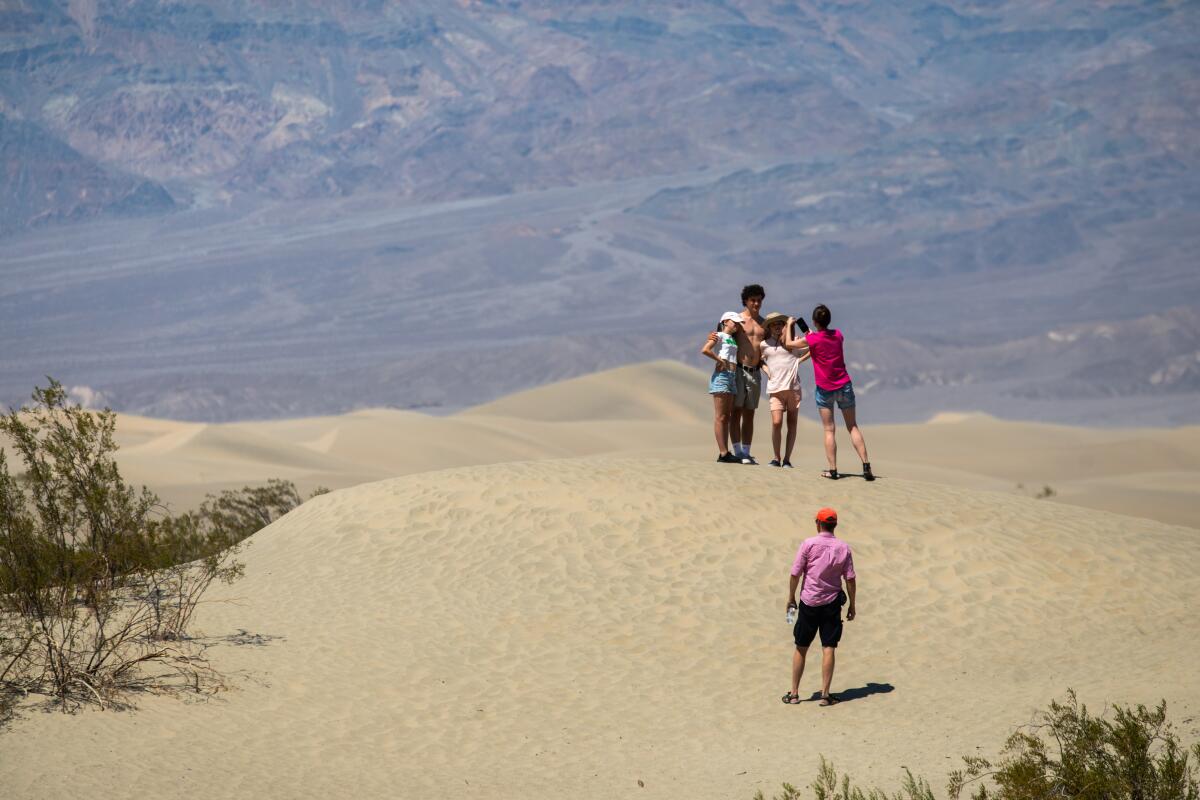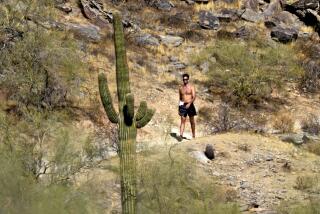Death Valley sets another heat record. August temperatures also could be above average

- Share via
Death Valley National Park set another record in July.
The area dubbed the hottest place on Earth saw an average temperature in July of 108.5 degrees, according to the National Weather Service. That broke the previous record of 108.1 degrees in July 2018.
The average high temperature last month in Death Valley was 121.9 degrees, tying the record set in July 1917.
The National Weather Service keeps a temperature sensor in Furnace Creek in Death Valley.
“It’s a pretty hot one out there,” said Morgan Stessman, a meteorologist in the National Weather Service’s Las Vegas office.
Farther south, a California town near the border of Arizona also boasted a new record for the hottest monthly average temperature in the country.
Needles averaged 103.2 degrees in July, surpassing Phoenix’s highest average temperature in July 2023 of 102.7 degrees, according to the Arizona State Climate Office.
More punishing temperatures may be on the way. Meteorologist Stessman said that there is a 50% to 60% chance that Death Valley will see above normal temperatures for the month of August.
A long, narrow basin near the border of Nevada, Death Valley is 282 feet below sea level. The mountains trap hot air and circulate the heat like a convection oven.
The highest temperature ever recorded in Death Valley was 134 degrees on July 10, 1913. The average high temperature that month was 116.5 degrees.
In July, a European tourist in Death Valley melted the skin off his feet when he lost his flip-flops in the sand dunes, park officials said. Also in July, a biker in Death Valley died.
The heat hinders rescue efforts. When temperatures exceed 120 degrees, a medical helicopter cannot access the park. Air expands when it is heated, becoming thinner than cold air and helicopters can’t get the lift needed to fly.
Trees and wildlife also are suffering. One 2022 study found that thousands of the trees have died at Telescope Peak, the highest point in Death Valley, since 2013.
Another study from 2019 found that about a third of Death Valley’s bird species have declined in the last 100 years because of heat stress associated with climate change.











